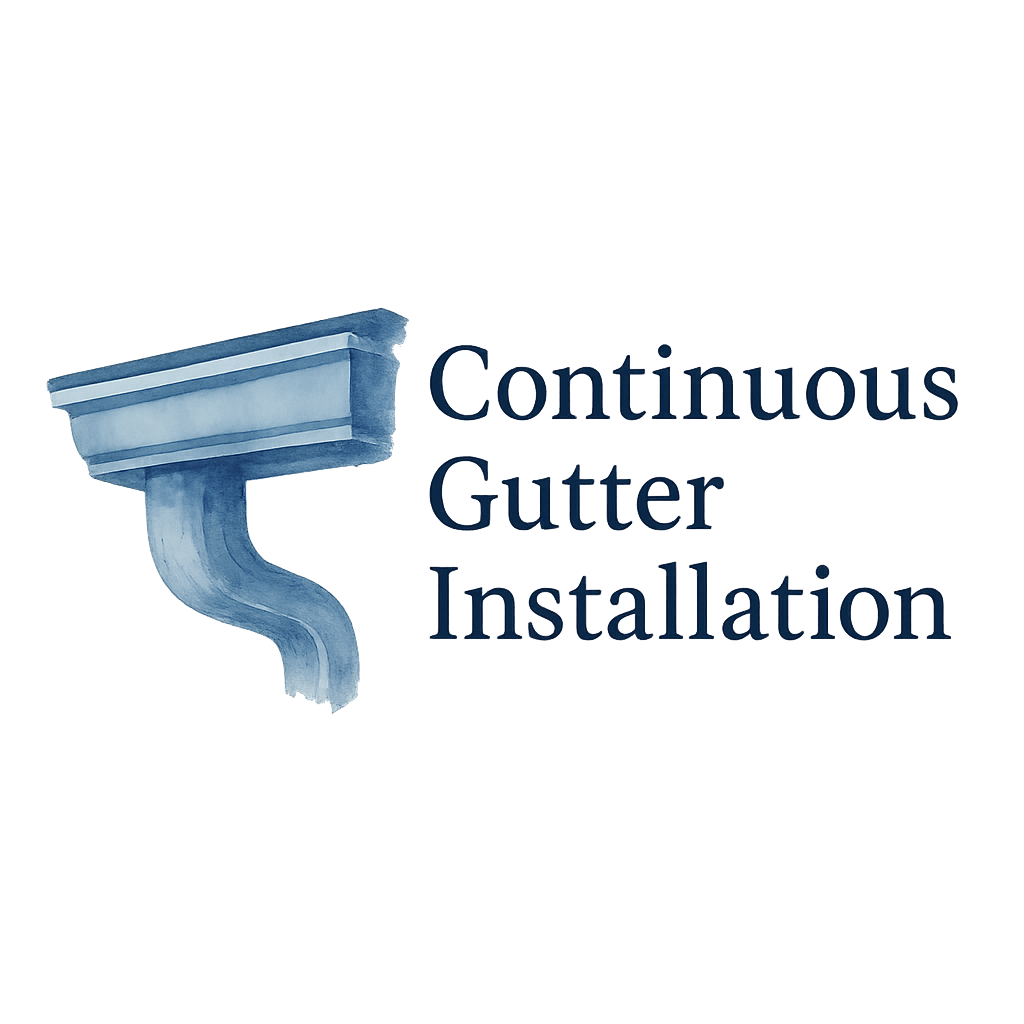Introduction: Why DIY Continuous Gutter Installation Matters
If you’ve been dealing with leaky gutters, overflowing rainwater, or constant home exterior damage, chances are your gutters need some serious attention. Hiring a pro can be expensive, but with a little patience and the right tools, you can absolutely tackle DIY continuous gutter installation yourself. Not only will you save a ton of money, but you’ll also gain the satisfaction of protecting your home with your own two hands.
In this guide, we’ll break down 10 step-by-step tips that make installing continuous gutters easy, safe, and long-lasting. Whether you’re a first-time DIYer or a weekend warrior, by the end of this article, you’ll have all the knowledge you need to transform your rain management system.
Understanding Continuous Gutters
What Are Continuous Gutters?
Continuous gutters, also called seamless gutters, are installed in single, unbroken sections that run the length of your roofline. Unlike traditional gutters that come in pre-cut pieces and often leak at the seams, continuous gutters provide a smooth pathway for rainwater to flow straight into downspouts.
Benefits of Installing Continuous Gutters
- Fewer leaks and clogs
- Sleeker, modern appearance that enhances curb appeal
- Improved protection for your home’s foundation and landscaping
- Less frequent maintenance compared to sectional gutters
You can dive deeper into the gutter types and styles here.
Common Misconceptions About DIY Gutter Work
Many homeowners think gutter installation is too advanced for DIY. In reality, with the right preparation, it’s no more complicated than installing shelving or flooring. The key is planning ahead and following each step carefully.
Preparing for DIY Gutter Installation
Tools and Materials Checklist
Here’s what you’ll need to get started:
- Ladder and stabilizers
- Tape measure
- Chalk line
- Hacksaw or power saw with metal-cutting blade
- Gutter sections or roll-form machine rental
- Downspouts and elbows
- Gutter hangers and brackets
- Sealant and rivets
- Safety gear (gloves, goggles, harness if necessary)
You’ll find more essentials in this gutter installation basics guide.
Safety Precautions Before You Start
Never underestimate safety. Gutters mean ladders, and ladders mean risk. Use stabilizers, work with a buddy, and never attempt DIY gutter installation in bad weather. Explore gutter safety tips for more guidance.
Step 1: Assess Your Roofline and Water Flow
Before anything else, evaluate your roofline. Look for dips, valleys, and areas where water naturally flows. This helps you decide where downspouts should go and ensures water moves away from your foundation.
Step 2: Measure Accurately for Continuous Gutters
How to Measure Like a Pro
Use a tape measure and chalk line to get the full length of your roofline. Always double-check measurements before cutting or ordering materials.
Common Measuring Mistakes to Avoid
- Ignoring slope (gutters should drop about 1/4 inch every 10 feet)
- Forgetting to account for downspout placement
- Measuring alone (always have someone hold the tape steady)
Step 3: Choose the Right Gutter Type and Style
Popular Styles and Their Functions
- K-Style Gutters – Decorative, holds more water
- Half-Round Gutters – Traditional, easy to clean
- Box Gutters – Best for larger roofs
Check out this detailed breakdown of modern gutter styles.
Material Choices for DIY-Friendly Gutters
- Aluminum – Lightweight, rust-resistant, easiest for DIY
- Steel – Durable but heavy
- Copper – Gorgeous but pricey
- Vinyl – Affordable but less durable
Step 4: Prepare the Work Area
Clear ladders, tools, and the roof edge before starting. Remove old gutters carefully to avoid damaging fascia boards. If rot is present, repair it before moving on.

Step 5: Cut and Assemble Continuous Gutters
Cutting Techniques for Clean Edges
Always cut with a fine-tooth blade and wear safety goggles. For seamless systems, rent or hire a roll-form machine for precision.
Assembling Sections Without Leaks
Use rivets and waterproof sealant on connections like corners and end caps. Proper assembly prevents long-term gutter damage.
Step 6: Install the Gutter Hangers and Brackets
Proper Spacing for Maximum Support
Hangers should be spaced every 24–36 inches. Closer spacing is better in snowy or rainy regions.
Mistakes That Lead to Sagging Gutters
- Using too few hangers
- Not checking slope
- Loose screws or poor bracket choice
Step 7: Attach Downspouts and Extensions
Why Downspout Placement Is Critical
Improper placement leads to pooling water and foundation cracks. Place downspouts at corners and low spots for maximum drainage.
How to Avoid Water Pooling Issues
Extensions should direct water at least 5–10 feet away from the house. You can also use splash blocks for added protection.
Step 8: Seal and Waterproof the Gutters
Apply a continuous bead of gutter sealant inside seams, around rivets, and under brackets. This ensures durability and leak-free performance.
Step 9: Test the System With Water Flow
Before calling it a day, grab your garden hose and simulate rainfall. Watch for leaks, sagging, or poor flow. Fix issues now rather than during the next storm.
Step 10: Perform Final Safety and Maintenance Checks
Check ladder marks, seal integrity, and hanger security. Make a note to revisit your gutters after the first rainfall to double-check performance.
Extra DIY Tips for Long-Lasting Gutters
Seasonal Maintenance Tricks
Routine checks in spring and fall go a long way. Clean leaves, twigs, and dirt using gutter cleaning tools.
Affordable Upgrades for Extra Protection
Consider gutter protection systems like screens or guards. They reduce clogs and extend gutter lifespan, making your DIY project even more worthwhile.
Cost Considerations for DIY vs. Professional Installation
Budgeting for Your Project
DIY costs typically range from $500–$1,500, depending on roof size and material. Use this gutter cost budgeting guide to plan effectively.
When to Call a Professional Instead
If your roof is too steep, high, or complex, hiring a pro may be safer. Explore affordable gutter services if you’re not confident in going solo.
Conclusion: Your Home, Your Gutters, Your Success
Installing your own continuous gutters might sound intimidating at first, but once you break it into simple steps, it’s completely doable. From measuring carefully to sealing every seam, every detail matters in keeping your home safe from water damage.
So grab your tools, follow these 10 steps, and take pride in knowing you’ve protected your home with your own hands. Not only will your house stay dry and secure, but you’ll also save big money while boosting your DIY confidence.
FAQs
- How long does DIY continuous gutter installation take?
Usually one weekend, depending on roof size and your skill level. - What’s the best material for DIY gutter projects?
Aluminum—lightweight, durable, and rust-resistant. - Do continuous gutters really need professional machines?
For perfect seamless runs, yes. But you can rent them or order pre-cut lengths. - How often should I check my gutters after DIY installation?
At least twice a year, and after major storms. - Can I install gutter guards with continuous gutters?
Absolutely. Check out gutter screens for easy add-ons. - What’s the biggest DIY mistake to avoid?
Incorrect slope and poor downspout placement—they cause clogs and flooding. - How do I know when it’s time for gutter replacement?
Look for sagging, cracks, rust, or recurring leaks. More signs can be found in gutter warning signs.


